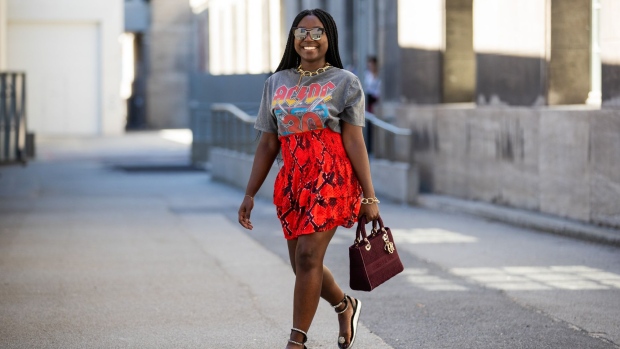Sep 16, 2020
Retailers Think You Can't Work in Sweatpants Forever
, Bloomberg News

(Bloomberg Opinion) -- Consumerism is back in fashion in spite of the enduring Covid-19 pandemic.
The biggest European clothing retailers Inditex SA and Hennes & Mauritz AB both demonstrated that demand for fast-fashion is stronger than expected as consumers try to return to some semblance of normality. The good news has driven up the Stoxx Europe 600 Retail Index 4% this week.
While Spanish retailing giant Inditex still reported a net loss in the first half of its financial year, it was less than analysts had feared. Chairman Pablo Isla called the second quarter a “turning point” as the owner of the Zara, Oysho and Pull & Bear chains returned to profitability. The company’s prowess in getting garments from design room to stores within weeks allowed it to cut its stock levels by 19%, a remarkable feat during the unprecedented coronavirus lockdowns.
But the most telling indicator is how sales have developed through the year. After plunging 44% in the first quarter, and staying down 31% in the second one, the decline was just 11% between August 1 and September 6. It’s a sign a recovery may be on the cards for the back-to-school — and for some back-to-the-office — season.
The pandemic has turbocharged e-commerce, and both Inditex and H&M have helped themselves weather the storm by bolstering their online operations. Other digital retailers have also benefited. Underlining the enthusiasm, shares in the online seller of cosmetics and protein shakes THG Holdings Ltd. rose more than 30% on Wednesday, their first morning of trading.
But it’s not just internet and mobile orders that are thriving. Associated British Food Plc’s cheap chic Primark has also traded strongly since stores reopened, even as the chain continued to stubbornly buck the online trend.
So what’s behind the retail recovery?
With travel abroad on the back burner for now, it’s freeing up more disposable income to spend on sporting the latest fashions or buying themselves other treats. On Tuesday Ocado Group Plc said it felt the difference in July and August with people staycationing. A year earlier, more were going away for their holidays, so they weren’t putting bottles of wine or barbecue fare into their online grocery baskets.
As people’s social lives pick up, they are more eager to get out to splurge and dress up again. Just glance at people walking in parks and promenading along seafronts. It may be a case that with so much time spent working in sweatpants, leaving home is now an excuse to put on a floaty dress.
But however strong the rebound, retailers shouldn’t be lulled into a false sense of security. While consumers are prepared to return to suburban retail outlets, which are often in open-air spaces with convenient parking, city-center stores remain quiet. ABF said it expected Primark’s U.K. same-store sales to be 12% lower than a year ago between reopening in June and the end of its its financial year on Sept. 12. But the decline would be just 5% when excluding the chain’s four large destination stores in London, Birmingham and Manchester.
Unless there is a large-scale return to work, or consumers become more confident about travelling on public transport and visiting what they perceive to be crowded locations, it’s hard to see this division between destinations changing.
Meanwhile, other risks remain, including the potential for second wave of the virus. And of course, the economic effect of the pandemic may not be fully felt yet. Rising unemployment, or fears of job losses, could cause consumers to become more cautious.
But for now, retailers should rejoice in the uptick in spending, particularly as it may not last for much longer.
This column does not necessarily reflect the opinion of the editorial board or Bloomberg LP and its owners.
Andrea Felsted is a Bloomberg Opinion columnist covering the consumer and retail industries. She previously worked at the Financial Times.
©2020 Bloomberg L.P.